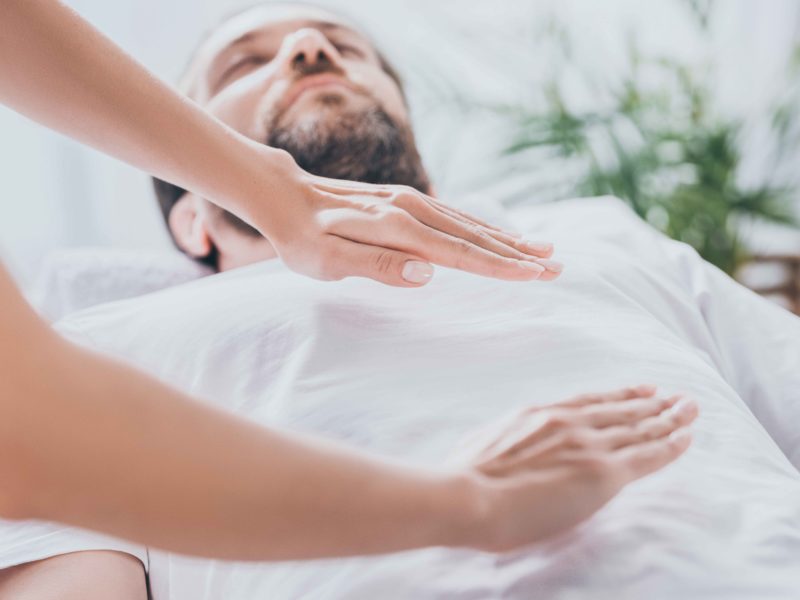
Demystifying Reiki
The first time someone mentioned Reiki to me, I was slightly sceptical as I didn’t completely understand it. How can you shift energy and support wellness simply by placing your hands on or around a person’s body? It wasn’t until I experienced a Reiki session for myself and went on to train as a Reiki practitioner, that I got to experience the true benefits of this powerful practice.
Reiki is a Japanese technique that was discovered and established in the 1920s by Dr Mikao Usui. Put simply, it is the natural and safe practice of energetic healing that is usually done by placing the hands in a series of positions over or slightly above the body. Reiki promotes healing by activating the relaxation response, and supporting the body, mind and emotions to return to balance. The Reiki principles also offer a way of living your life in a present and empowered state once you remember the truth of who you really are.
Reiki is energy
Reiki is simply energy, and it runs through each and every one of us. More formally, it is defined as universal life force energy; Rei means ‘universal’, ki means ‘life force energy’. It is the energy that moves through all living things; humans, plants, animals etc. You may have also heard the words ‘chi’ or ‘prana’ in other modalities such as yoga which refer to the same energy.
If you think about the energy that moves through our walls when we turn on the lights, or the wifi which allows us to connect to the internet, Reiki works in a similar way. We cannot see the energy moving, but we know it’s there and during a Reiki session, you can often feel the energy.
If you think about the energy that moves through our walls when we turn on the lights, or the wifi which allows us to connect to the internet, Reiki works in a similar way. We cannot see the energy moving, but we know it's there.
How does it work?
Energy can stagnate in the body where there has been physical injury or possibly emotional pain i.e. ongoing stress. In such cases, the body’s self-regulating mechanisms can no longer do their jobs, resulting in a decline in your health. You may become irritated or angry, suffer from headaches, stomach aches, muscle tension and pain, feel anxious, restless or depressed.
Reiki works by directing energy into your body, with an experienced Reiki practitioner typically placing their hands on the affected areas. Your body takes in the energy where it is most needed. This powerful flow of energy may bring a near immediate sensation of relief as it releases tension, lessens the impact of stress and shifts any blocked energy.
What you may feel after Reiki
Reiki sessions are different each time, as the energy gives you exactly what you need in that moment depending on your current state. Some people report experiencing a sense of relaxation and peace, a heightened sense of awareness or a shift in old emotions or limiting beliefs that may be holding them back. Reiki has also been known to reduce tension, relieve stress, promote an increase in energy and assist with injury recovery. Those under a physician’s care for anxiety or depression may find Reiki very helpful too.
Interested in trying Reiki?
If you know someone who has received a Reiki treatment, ask them what their experience was like or do some research and find a Reiki practitioner that you resonate with. Most importantly, go with an open-mind; Reiki can only work as deeply as you allow it.
If you’d like to find out more about my Reiki offering or book in a session, click here.
For those currently under a physician’s care, Reiki can be administered along with their regular medical care. Reiki is not meant to diagnose, treat, cure, or prevent an illness or disease. Reiki is used in conjunction with conventional medicine. Many hospitals offer Reiki to their patients as a form of integrative medicine.




